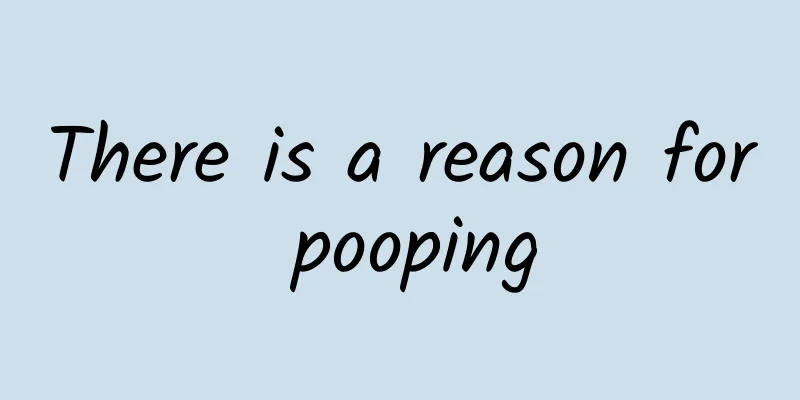There is a reason for pooping

|
Author: Wang Enhui Shengjing Hospital Affiliated to China Medical University Reviewer: Xu Lingfen, Chief Physician, Shengjing Hospital Affiliated to China Medical University Constipation is one of the common digestive tract symptoms in childhood. Many babies are troubled by constipation. Some children even develop anal fissures and bloody stools due to constipation, which makes their families very anxious. There are many reasons for constipation. Compared with adults, children have the physiological characteristics of low colon motility and reduced ability to transport feces. In addition, insufficient dietary fiber intake or insufficient fluid intake can lead to dry stools. Failure to develop the habit of regular bowel movements, lack of exercise, long-term excessive mental tension, and large amounts of calcium and iron supplements can also cause or aggravate the occurrence of constipation. So, how can we scientifically let children poop? Let's talk about it below. Development of bowel habits The development of good bowel habits in children is very important for preventing and treating constipation. Theoretically, the best time to defecate is early in the morning. For children with constipation, they can drink a glass of water on an empty stomach after getting up in the morning, and then squat on the toilet. If they feel like defecating, they can defecate normally; if they don't feel like defecating, they don't need to force themselves. If they still haven't defecated after 15 to 20 minutes, they can end the process. This kind of defecation training can help children establish conditioned reflexes and form good defecation habits. At the same time, parents should also urge their children to defecate when they feel like defecating, and not to hold it in. Correct defecation posture At present, most families in cities use toilets. Although sitting to defecate is more comfortable, it will increase the difficulty of defecation for children with constipation. In contrast, squatting is more suitable for children. When defecating, half squat in front of the toilet, relax your feet, keep your legs and knees about 30 cm apart, lean forward, relax your elbows, place them on your thighs, and try to relax. If there is no squat toilet at home, you can place a small stool about 10 cm high in front of the toilet, put your feet on the stool when defecating, and raise your lower limbs appropriately, which can also simulate squatting to a certain extent. Correct breathing rhythm Many people with constipation have a wrong understanding that they should hold their breath and use force on their abdomen when defecating. However, this will aggravate the difficulty of defecation for people with constipation and even cause hemorrhoids, anal fissures and other diseases. Because when you hold your breath and use force, the anal sphincter contracts, the anus closes tightly, and dry and hard feces are more difficult to expel. The correct way is to relax your shoulders and abdomen, inhale through your nose, exhale through your mouth, and use appropriate force on your abdomen to ensure that the force is sustained and not relaxed, and at the same time ensure that the breathing rhythm is not interrupted. This is the most correct way to defecate for children with constipation. Good eating and living habits In addition to mastering the above defecation techniques, constipation can only be improved by adopting good eating and living habits. 1. The dietary fiber contained in cereals has a good laxative effect: such as oats, brown rice, rye, red beans, boiled corn, etc. 2. Eat plenty of vegetables: such as green leafy vegetables rich in dietary fiber, broccoli, cabbage, etc. 3. Maintain adequate fruit intake: The intake of sorbitol in apples, pears, and prunes helps soften stools. 4. Drink plenty of water to ensure water intake. 5. Appropriate physical exercise and sufficient and regular sleep can promote intestinal peristalsis and also help regular bowel movements! Figure 1 Copyright image, no permission to reprint Use medication with caution In addition, it is important to emphasize that enema should be used with caution. For those with hardened stool or stool impaction, enema can be used under the doctor's advice, but it should not be used frequently to avoid causing children's fear of defecation and aggravating constipation! Figure 2 Copyright image, no permission to reprint As the saying goes, "If your baby poops well, you will have fewer anal diseases." Defecation may seem simple, but there are actually many things to pay attention to and skills to learn. Parents can work together to help their babies poop scientifically and live a healthy life every day! |
<<: Eyelashes - Not Just for Beauty
>>: CNN: Data analysis: How big is Apple's iPhone business? Bigger than the entire Microsoft
Recommend
Are vulvar growths necessarily caused by HPV?
I believe everyone is familiar with HP v. HP v is...
Why do women have nipple hair?
I believe that in life, many women will find that...
Symptoms of threatened miscarriage during the second trimester
If a woman is not careful during the second trime...
Can cervical erosion and hypertrophy heal itself?
In fact, women generally do not need special trea...
How to treat postpartum disease?
If you do not pay attention to your own health du...
Can women with small triple positive have children?
Many young female patients with triple positive h...
Department of Nuclear Medicine, Jilin University Second Hospital [Combined Application of Tumor Markers] Phase III - Colorectal Tumor Marker Panel
Author: Zhang Mengxian First review: Tai Jing Fin...
Why does leucorrhea turn white?
Leucorrhea is generally an important reference fo...
What are the symptoms if the fallopian tubes are blocked?
There are some women in life who are unable to ge...
Breast pain and delayed menstruation, what's going on?
Many female friends experience breast and lower a...
Treat winter diseases in summer, and apply "Sanfutie" during the dog days
This is the 2640th article of Da Yi Xiao Hu The d...
I vomited after an hour of glucose tolerance test.
I often hear mothers say that drinking such sweet...
Can female tinea cruris heal itself?
Jock itch is more common in women, and it is comm...
What medicine should I use for vaginal itching and leucorrhea
The female vagina is connected to the outside wor...
I didn't take folic acid during pregnancy
Most expectant mothers start taking folic acid su...









